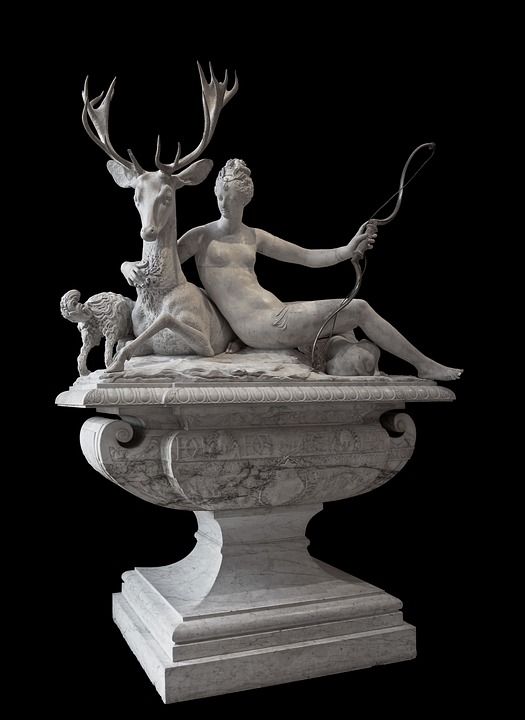Exploring the Timeless Treasures: A Day at the Louvre Museum
Nestled in the heart of Paris, the Louvre Museum stands as a beacon of art and history, an awe-inspiring fortress that timelessly preserves the stories and creativity of human civilization. Originally constructed as a fortress in the late 12th century, the Louvre has transitioned into the globe’s most visited museum. Today, it shelters an estimated 35,000 pieces of art in its rich, expansive collection. Spending a day at the Louvre is not merely a visit; it’s embarking on a journey that spans centuries and continents, a deep dive into the annals of art history.
Arriving early at the Louvre Museum is imperative for art enthusiasts looking to maximize their experience. As you step into the grand courtyard, the juxtaposition of the modern glass pyramid against the classical French Renaissance architecture sets the tone for the eclectic array of treasures within. The pyramid, designed by architect I. M. Pei, serves as a stunning entrance that leads visitors into this world of wonder.
The Louvre is organized into several departments – Near Eastern Antiquities, Egyptian Antiquities, Greek, Etruscan and Roman Antiquities, Islamic Art, Sculptures, Decorative Arts, Paintings, Prints, and Drawings. Each section is a universe of its own, boasting masterpieces that have transcended time and cultural shifts.
Begin your journey with the Egyptian Antiquities. Walking through the grand halls under dimmed lighting, the mystery and the mythology of the ancient Egyptians envelop you. The Great Sphinx of Tanis, an imposing figure from around 2600 B.C., is an excellent prelude to the magnificent collection housed here. The section teems with artifacts, including hieroglyph-inscribed steles, intricate jewelry, and the mesmerizing Dendera Zodiac. For many, gazing upon these relics is akin to conversing with the pharaohs, priests, and commoners of ancient Egypt.
Next, make your way to the Greek, Etruscan, and Roman Antiquities. This section is home to one of the museum’s most celebrated pieces: the Winged Victory of Samothrace. The statue, masterfully carved to portray movement and grace, stands majestically at the Daru staircase. This Hellenistic sculpture is a tribute to the goddess Nike, representing naval victory, and captivates visitors with its sense of liveliness and dynamic beauty despite missing its head. Nearby, the Venus de Milo, is another masterpiece that dominates this collection. Believed to represent Aphrodite, the goddess of love and beauty, her delicate curves and serene expression exude an enduring allure.
Painting enthusiasts are naturally drawn to the Paintings department. Amongst thousands of notable works hangs the Mona Lisa, perhaps the world’s most famous painting. Created by Leonardo da Vinci in the early 16th century, the Mona Lisa’s enigmatic smile and mysterious gaze have intrigued and enthralled millions. Viewing her up close, shielded behind bulletproof glass, is a rite of passage for art lovers, and one can spend quite some time contemplating the myriad interpretations of her expression. Alongside the Mona Lisa, the room buzzes with admiration for the masterpieces surrounding her, like "The Coronation of Napoleon" by Jacques-Louis David and "Liberty Leading the People" by Eugène Delacroix.
Throughout the Sculpture galleries, the tactile nature of form and space captivates the eye. Michelangelo’s "Dying Slave," with his dramatic contrapposto and anguished expression, captures the intense emotion and exquisite craftsmanship of the Renaissance master. The grand halls are lined with sculptures that range from the medieval period to the 19th century, each piece telling a story in its unique language of stone.
In the Islamic Art department, the treasures of the Muslim world are resplendently displayed. With artifacts ranging from richly adorned ceramics to intricately woven textiles, this section is a testament to the sophistication and diversity of Islamic cultures from Spain to India. The finely detailed metalworks and striking tile mosaics show the confluence of artistry and spiritual devotion, transporting visitors to the storied courts and bustling markets of the historical Islamic empires.
Heading into the Decorative Arts section, visitors are immersed in the domestic life of centuries past. The collection encompasses exquisite French crown jewels, ivory carvings, and delicate tapestries that depict the opulence and artistic tastes of different eras. The lavish period rooms recreate the majesty and luxury of royal European interiors, immersing viewers in the lifestyles of the aristocracy.
To conclude an unforgettable day at the Louvre, many visitors find themselves in the Prints and Drawings department. This lesser-visited section houses an impressive collection of sketches and illustrations from renowned masters such as Rembrandt and Michelangelo. The detailed works on paper offer an intimate glimpse into the creative processes and evolving styles of these esteemed artists, completing the museum experience with an appreciation for the nuances of artistic expression.
After hours of walking through the corridors of history and interacting with timeless masterpieces, it’s a delight to relax in the Louvre’s charming cafes or quaint gardens, reflecting on the vast tapestry of human creativity you’ve just experienced. The Louvre is not merely a repository of art; it is a celebration of our shared heritage and an inspiration for future generations.
The Louvre Museum is a cornerstone of global culture, offering a window into the rich narratives, dreams, and imaginations of humanity across epochs and geographies. A day at the Louvre is a humbling and enriching encounter that leaves the visitor with a profound appreciation for the ingenuity and resilience that define the human spirit. As the echoes of centuries resonate within its storied halls, the Louvre remains a timeless testimony to the enduring power of art and history.




